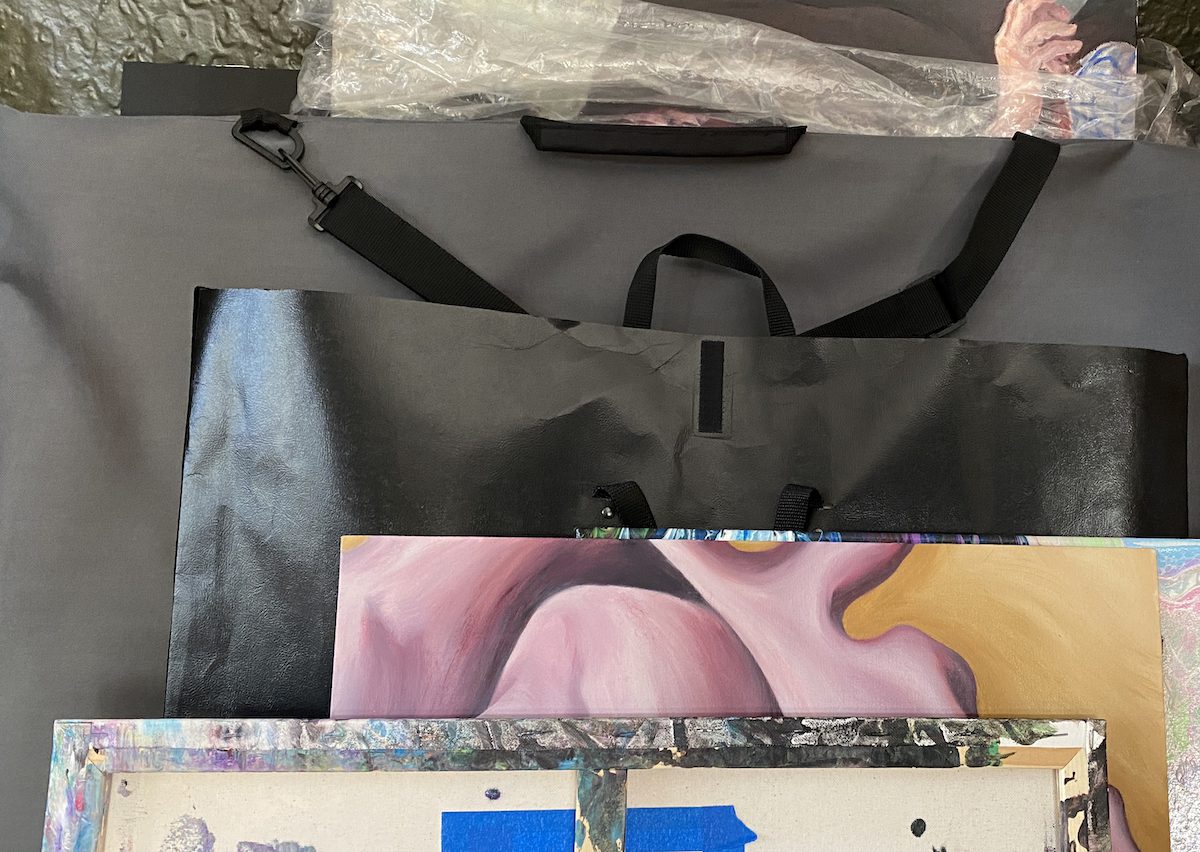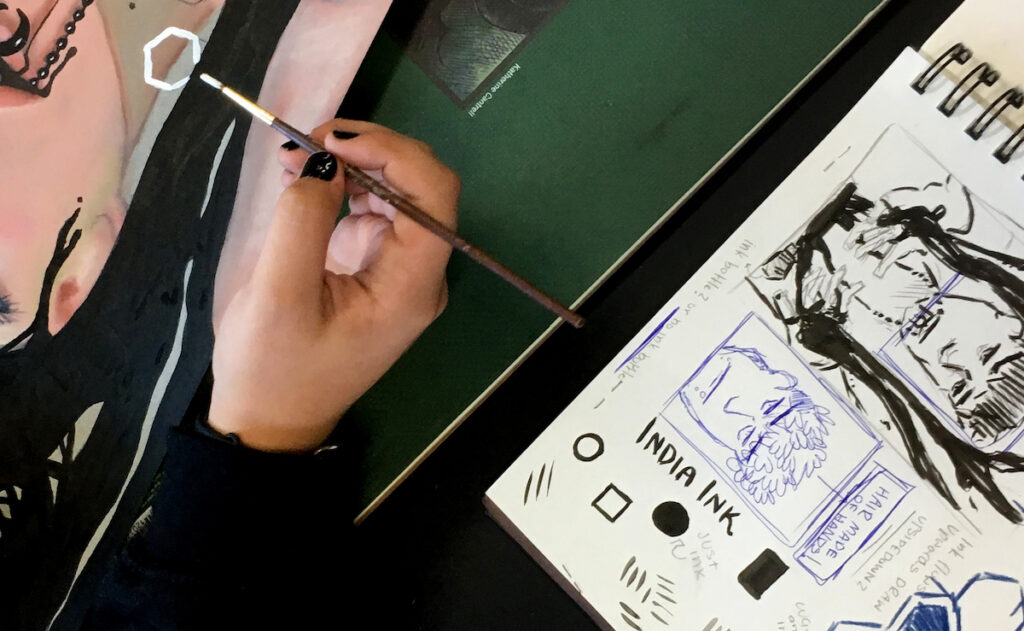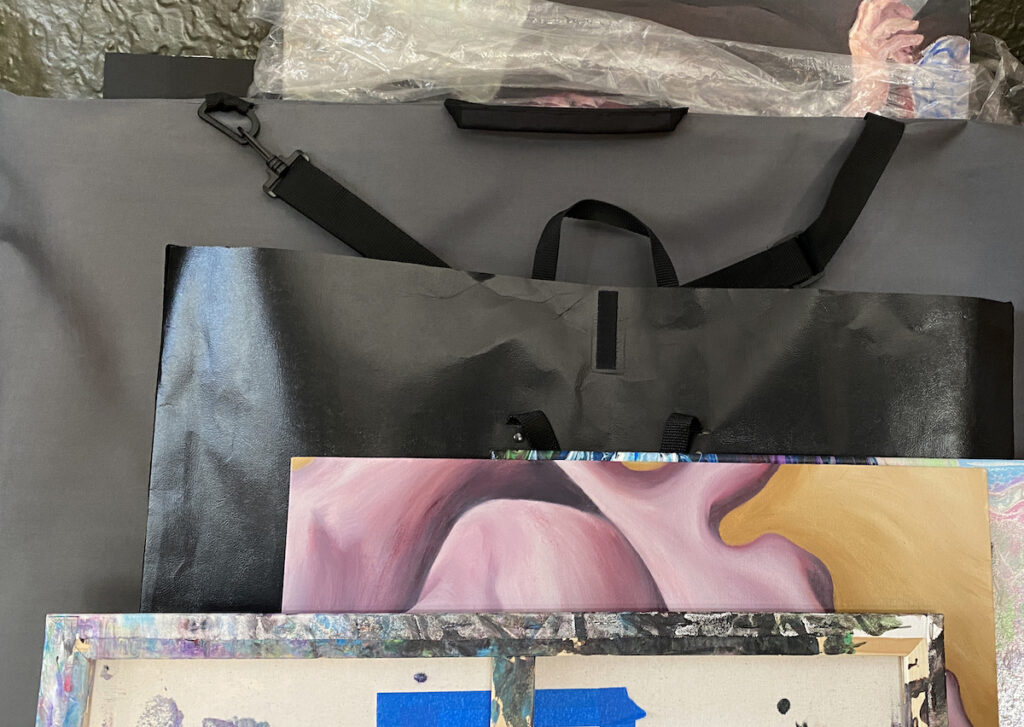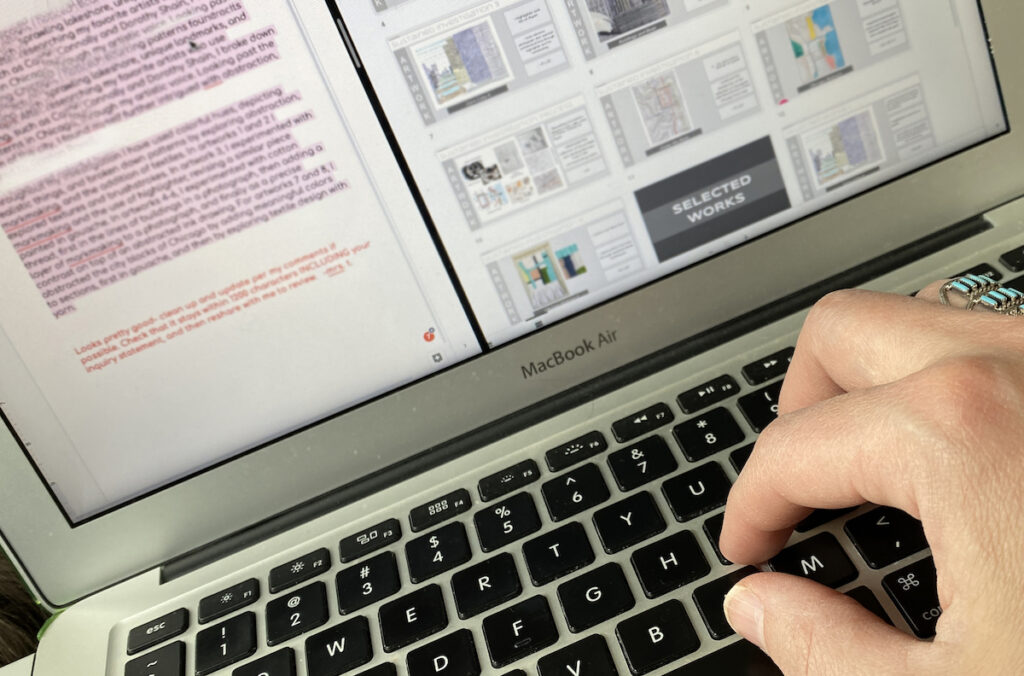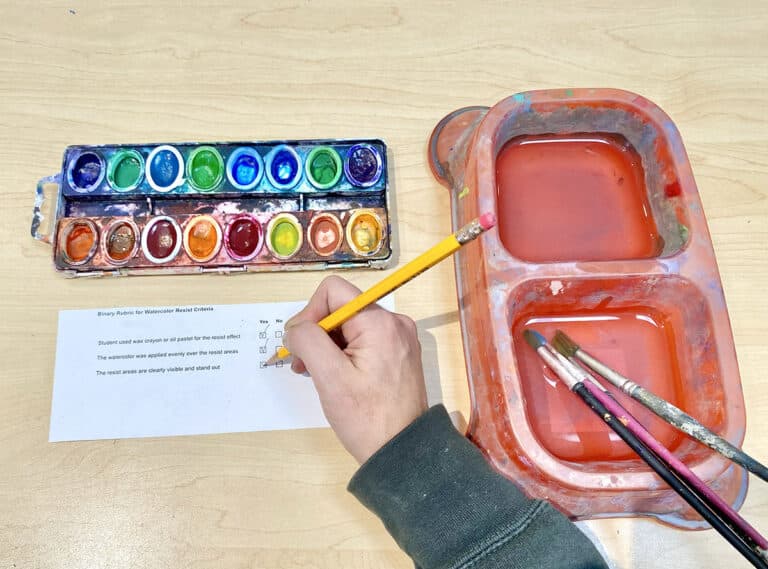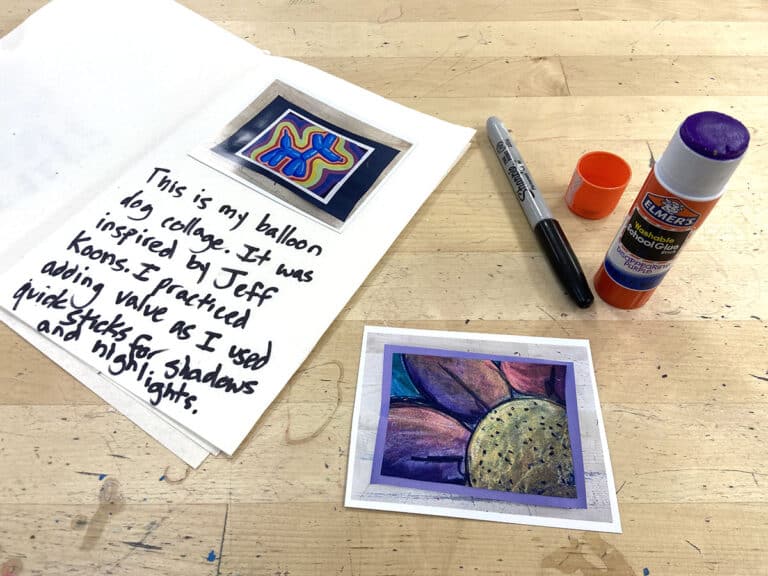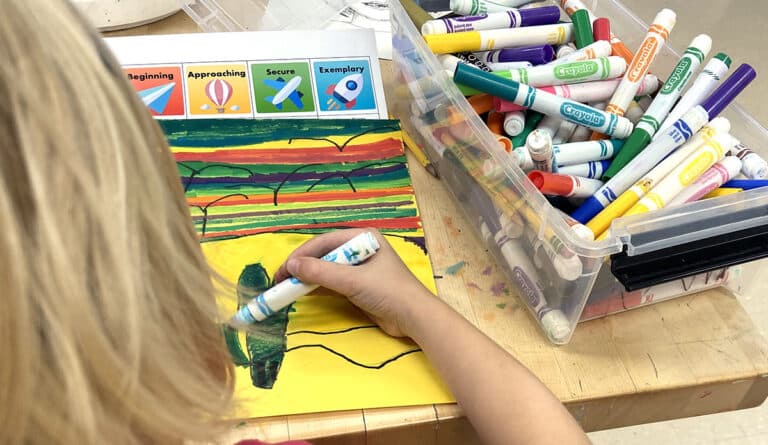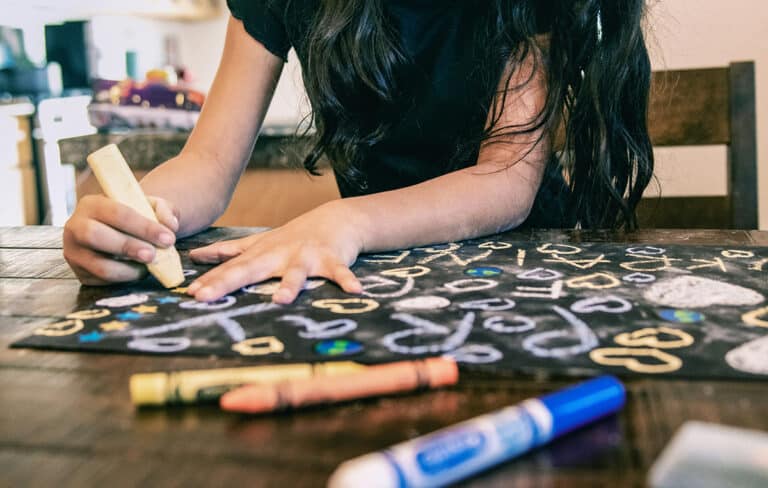Refer to College Board for the latest requirements on AP Art and Design Portfolios as submission details continue to change throughout the pandemic.
Art Education and the Coronavirus (COVID-19)
As you have now transitioned to online learning and continue to prepare your students for the AP Portfolio submission, there are a lot of unanswered questions. While everyone is doing the best they can with the situation at hand, including the AP College Board, teachers are left feeling uncertain about how best to prepare their students for exam submission. I had the opportunity to virtually meet with art teachers across the country to sort out their lingering questions and concerns. Together we discussed and brainstormed solutions and ideas to help our students during this time.
Real Art Teacher Answers for Advanced Placement Questions
How many images will be evaluated?
Reviewing social media platforms, it’s clear teachers and students are unsure of what is happening with the scoring when it comes to the AP submission. There is a new shift from fifteen to ten sustained investigation images and from five to three selected works. Teachers have been asking whether a student can submit more than ten images, will images beyond ten be scored, and is it better to now include only fully developed artworks or are process images still as important?
Don’t stop learning this summer. Attend the NOW Conference.
AP has made it clear that only the first ten sustained investigation images and three for selected works will be scored. However, due to platform issues, students still have to submit fifteen images and five images in order to press “submit.” The catch is only the first ten sustained investigation images, and the first three selected works, will be scored. So, students must use “placeholder/false images” instead of actual images for the remaining slots. This is to indicate these images are not to be scored. See example below:
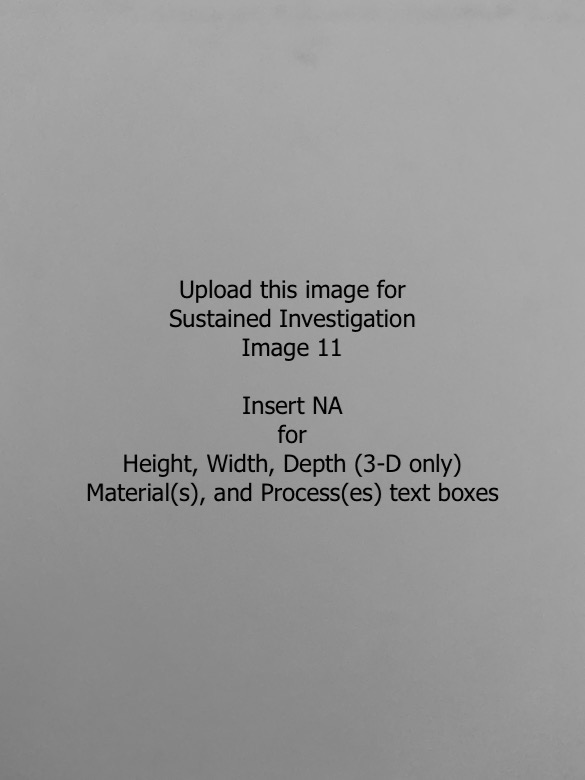
While it may be difficult to pare down to ten images, some process photos are still very much essential. Jeanne Bjork, an art teacher at Pewaukee High School in Wisconsin, states, “Documentation is important! AP made this significant change [to the portfolio] for this purpose. Students now need to curate from process images to finished works to find the best way to tell their story.” Drew Brown of Milton High School in Georgia reminds us to encourage students to “Write about this in their statements.” Students have been thinking about their work for this whole year; now is the time to talk about how they had to adjust and curate these changes.
What about unfinished artwork that is inaccessible?
Many teachers had little time to prepare for not returning to their classrooms, let alone prepare students to take artwork with them. Many unfinished artworks are still in classrooms. What to do?
You might be able to request access to the building from your administration and, if necessary, have the student and parents plead the case as well. Also, consider video-conferencing with your administrator and showing them where the artwork is located to ask if they would be willing to deliver it to the artist. It doesn’t hurt to ask. The worst answer you will get is “No.”
Another option for students who have photos of physical work but still need to revise is to digitally manipulate the images. Just make sure you mention this in the processes and materials sections of the exam.
What if photos of the work are not of good quality?
If you or your students have their work at home, there are several tips to help with at-home photography. How to Photograph Your Art by the Sketchbook Skool not only has great tips for using your smartphone but also helping with lighting tips and tricks. AP Art and Design YouTube channels now include a series of support videos to help your students from home and include a video specifically supporting students with photographing and resizing their artwork.
My students don’t have Photoshop at home, what are some digital tools my students could access?
If your school or district has an Adobe Creative Cloud license, you can request access for your students through May 31st. Students may then be able to use Photoshop, Lightroom, or other Adobe Products to continue creating or to adjust images for submission. Click here for more help with an APAD Final Portfolio Submission Checklist and Digital Resources for APAD Portfolio Submission.
What happens with 3-D work?
Some teachers, like Alexandra Scott, an art teacher in Gwinnett County, Georgia, have had some ability to access their classes through administration approval to unload kilns, photograph work, or even arrange a student dropoff date so teachers can fire their work. This may not be feasible for most teachers’ situations. So, what do you do? Hopefully, students have photos of their work in progress. Some suggestions include experimenting with alternative materials at home and addressing this shift in the Sustained Investigation Statement.
Lynn Hatcher, an art teacher at Milton High School in Fulton County, Georgia, joked that her students clearly know how to make a meme, so why not use those skills to visually talk through their artistic intentions? Students can demonstrate their process and intentional decisions through sketching, research, and annotated drawings or images. They can create maquettes using found materials and discuss their intentions using the processes and materials text boxes.
Tim Needles, an art teacher at Smithtown High School East in New York, and author of the book STEAM Power: Infusing Art Into Your STEM Curriculum suggests trying out 3-D modeling apps like Morphi if students can’t get ahold of their clay. While students might be learning new ways to rethink their 3-D work, trying out these tech avenues can demonstrate students’ ability to explore and experiment with what they have. Talk about being resourceful and creative! Tim notices how this crisis has pushed his students’ thinking and how their “creative process is way more interesting than what they had planned.”
What if students don’t have materials at home? Or they cannot go outside?
Just like not having ceramics at home, it’s time to get extra creative and resourceful. If students don’t have materials at home, how can you encourage them to explore materials they do have? What materials could they explore that will enhance their synthesis of materials and ideas? Instead of scrapping their pre-shutdown artwork ideas, talk to students about responding to their situation through their inquiry artwork.
Learn more about guiding your students and Online Learning.
Frank Matas, an art teacher at Lake Park High School in Illinois, suggests students shift their inquiries to respond directly to this crisis. If students were talking about community in their inquiries prior, how can they demonstrate this drastic juxtaposition? Taking photos of empty streets next to previously crowded situations creates an interesting dichotomy students might not have had the opportunity to show prior. He also suggests students try creating a crowd of people. Why not make packing tape sculptures to represent the “ghosts” of people that are no longer making up your community? Getting extra creative with what you have, and documenting this process will be important.
I still have more questions, now what?
If you are feeling like this, you are not alone. The new rubric and expectations have reminded us to question the role of art, how we create, and what is the purpose of art in a larger sense. This pandemic has given us a chance to really internalize those connections. Will the College Board adjust their rubric to account for our current situation? While they did respond with fewer submission expectations, teachers are still wondering how the rubric is accounting for revision, for example, when students may not be able to demonstrate this under their new circumstances?
Teachers are also wondering how much time the readers will spend looking at and reviewing artwork now that they are scoring at home. With this new portfolio, the question of time spent scoring is a concern.
And, the largest concern that continues to be the big “what now” highlights equity and access. What happens when your students don’t have access to any technology or the internet? Elizabeth Osborne, an art teacher at Kenwood Academy in Chicago, continues to watch the equity gap widen as she tries to get tools and materials into her students’ hands. Many schools might have access to Google Classroom or other Learning Management Systems. Still, if schools haven’t been set up to consistently use this technology and teach students how to access these tools, it’s not realistic to expect a smooth transition into remote learning.
Despite the questions, we love our students.
During our conversation, one thing was very clear: Teachers want to celebrate the work of their students! Everyone is doing the best they can. Students are trying to keep up their motivation to continue to create at home with what they have. The truth is that the daily changes and larger concerns still rest on the shoulders of our teachers. Teachers are not only digesting the AP changes but then translating these to best support their own students’ individual needs. Regardless of the circumstances or scores, it’s essential to remind our students that they are more than a score, and there are bigger life priorities than their AP exam submissions.
What lingering questions do you have about the AP Exam this year?
How has remote learning impacted your AP students?
Magazine articles and podcasts are opinions of professional education contributors and do not necessarily represent the position of the Art of Education University (AOEU) or its academic offerings. Contributors use terms in the way they are most often talked about in the scope of their educational experiences.
